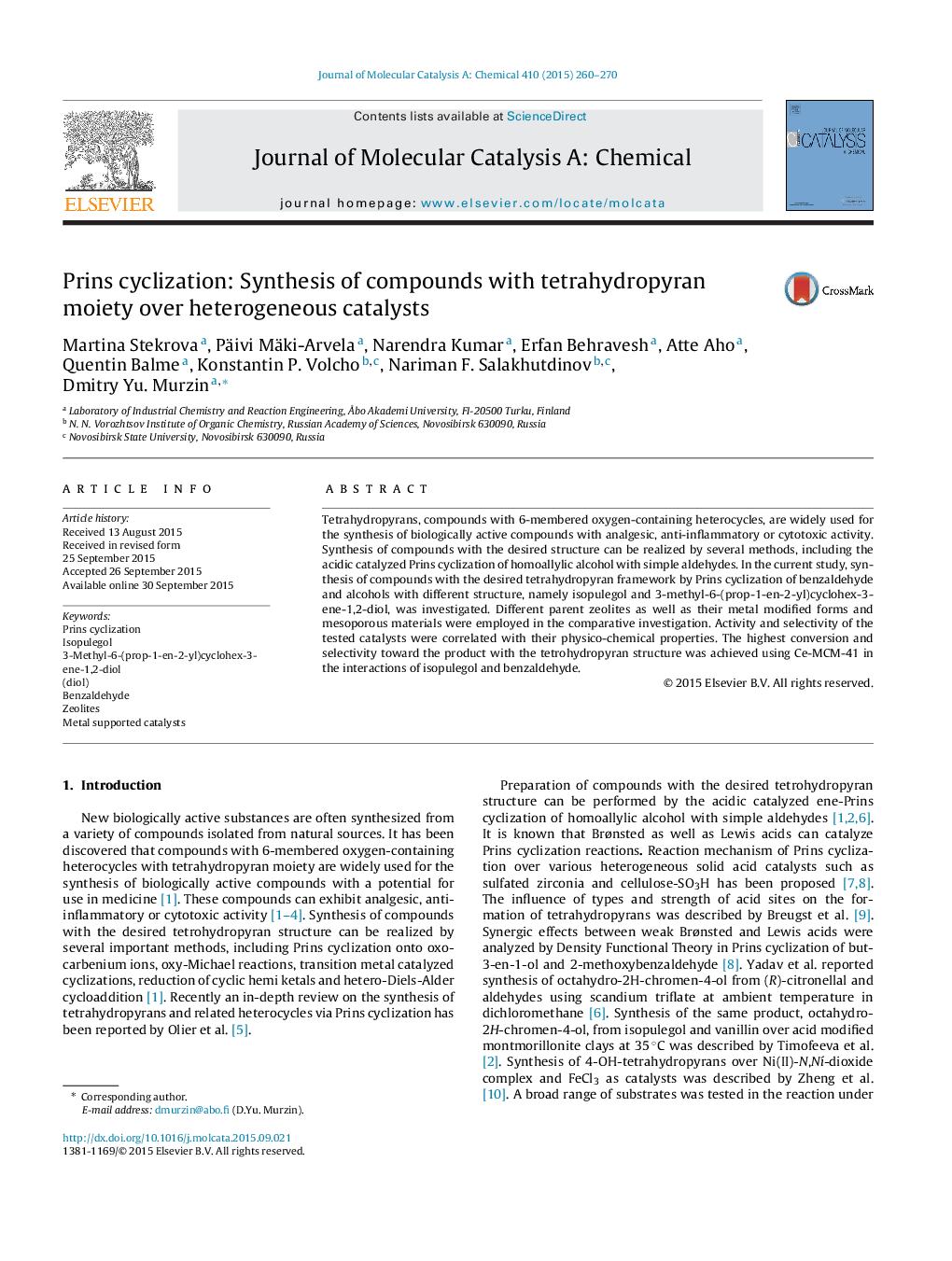| Article ID | Journal | Published Year | Pages | File Type |
|---|---|---|---|---|
| 64850 | Journal of Molecular Catalysis A: Chemical | 2015 | 11 Pages |
•Acidic catalyzed Prins cyclization of homoallylic alcohol with simple aldehydes.•Isopulegol and 3-methyl-6-(prop-1-en-2-yl)cyclohex-3-ene-1,2-diol as alcohols.•Comparative investigation of zeolites, metal modified forms and mesoporous materials.•Correlation of performance with physico-chemical properties.•High selectivity to tetrohydropyran structure with Ce-MCM-41 in reaction of isopulegol and benzaldehyde.
Tetrahydropyrans, compounds with 6-membered oxygen-containing heterocycles, are widely used for the synthesis of biologically active compounds with analgesic, anti-inflammatory or cytotoxic activity. Synthesis of compounds with the desired structure can be realized by several methods, including the acidic catalyzed Prins cyclization of homoallylic alcohol with simple aldehydes. In the current study, synthesis of compounds with the desired tetrahydropyran framework by Prins cyclization of benzaldehyde and alcohols with different structure, namely isopulegol and 3-methyl-6-(prop-1-en-2-yl)cyclohex-3-ene-1,2-diol, was investigated. Different parent zeolites as well as their metal modified forms and mesoporous materials were employed in the comparative investigation. Activity and selectivity of the tested catalysts were correlated with their physico-chemical properties. The highest conversion and selectivity toward the product with the tetrohydropyran structure was achieved using Ce-MCM-41 in the interactions of isopulegol and benzaldehyde.
Graphical abstractFigure optionsDownload full-size imageDownload high-quality image (60 K)Download as PowerPoint slide
